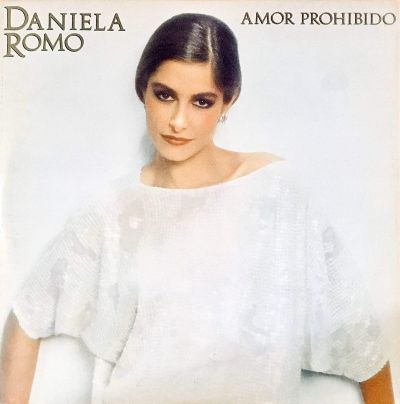SONGWRITER
Yo No Te Pido la Luna: origins and meaning of Daniela Romo's best hit

Daniela Romo's Amor Prohibido CD cover
Yo No Te Pido la Luna is an influential Latino pop song whose musical harmony borrows from the 1980s Italian track Non Voglio Mica la Luna credited to three famous songwriters Zucchero Fornaciari, Luigi Albertelli, and Enzo Malepasso. Unlike the original song that had seen traction on the national charts only, its Spanish adaptation, performed by the Mexican singer Daniela Romo, gained international success and ranked 9th on the Rolling Stone's 50 Greatest Latin Pop Songs (from the 1950s to now).
Taking on a harmonic progression composed by highly skilled Italian songwriters, Daniela Romo wrote the new lyrics for her cover which completely flipped the original meaning.
Indeed, Daniela Romo's lyrics of Yo No Te Pido la Luna (literally means I'm not asking you for the moon) invites her beloved into her arms through very sensual and unambiguous metaphors, while the Italian original tells of a woman looking to end the relationship in search of her own space where she can be herself.
Listen to Yo no te pido la luna by Daniela Romo:
Compositionally, Yo No Te Pido la Luna reveals a harmony that's far from complex but nevertheless impeccable. It follows the classical tonal theory, namely the Ionian mode. In the harmonic analysis of the verses' chord chains, the scale degrees (denoted with Roman numerals) show the following progressions in the key of D♭ major:
- D♭–A♭–E♭m–B♭m or I–V–ii–vi;
- D♭–A♭–E♭m–B♭m or I–V–ii–vi;
- G♭–D♭–E♭m–B♭m or IV–I–ii–vi;
- G♭–D♭–E♭m–A♭ or IV–I–ii–V.
The first two lines of the verse are accompanied by the same chord chain, showing a good example of a so-called harmonic sequence where a certain musical turnaround is repeated in a modified form involving different scale degrees. Here the segment of the sequence is formed by two chords I–V whose roots are spaced by a perfect fifth. This segment repeats starting with the second (ii–vi) scale degree which involves minor triads. The contrasting third line revolves around subdominant function chords, while the fourth line ends with a half authentic cadence using the A♭ dominant chord rooted in the fifth scale degree thus anticipating the appearance of the D♭ tonic chord at the beginning of the next section.
The song's choruses are performed with two chord progressions:
- D♭–G♭–A♭–Fm or I–IV–V–iii;
- B♭m–E♭m–A♭ or vi–ii–V.
In the V–iii chord combination, we can clearly observe a kind of deceptive cadence at the end of the first progression, whereas the second progression showcases a powerful classical half-cadence: vi–ii–V.
Towards the end of the song, the harmony gets a refreshing treatment through the use of a fascinating bridge leading into the Eb Ionian modulation where the chorus is looped over and over until the song fades out.
Curiously, Daniela Romo lowered the original song key (D Ionian) by a semitone, apparently to better match her vocal range.
Discover more songs composed in Ionian major mode and check out their harmonic analysis in the following articles:
- 6 songs to unpack Ionian mode and the major scale
- 9 Beatles songs that combine harmonic major with Ionian mode
- Burbujas de Amor: playful and saucy lyrics by Juan Luis Guerra
- Mariposa Traicionera: meaning and flamenco roots of Maná's top hit
- Sugaree: Jerry Garcia's song referencing his lyricist's criminal past
- D'yer Mak'er: meaning of Led Zeppelin's most controversial song
- Seven Seas of Rhye: song of imaginary land brought to life by Ionian and Mixolydian modes
- Coal Miner's Daughter was forced to remove a third of the lyrics from her autobiographical song
- I Wanna Be Sedated: pure classical harmony cementing the Ramones' hit in punk rock history










